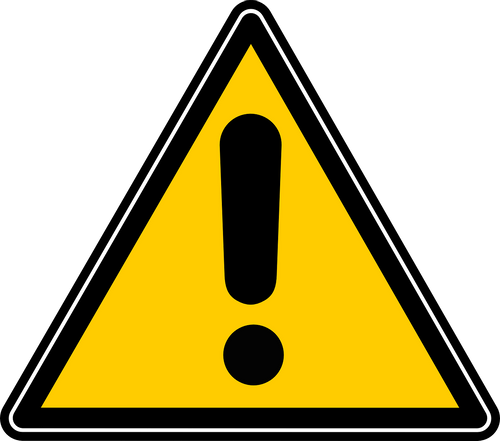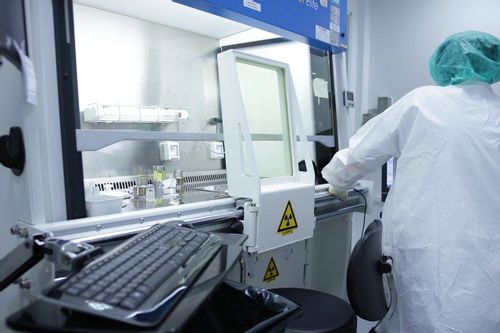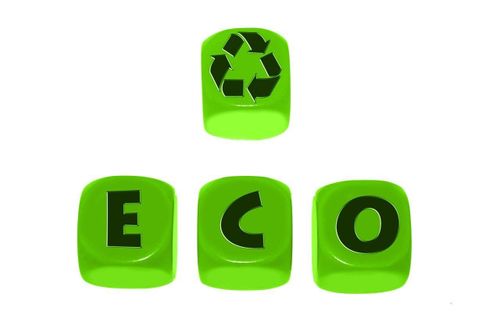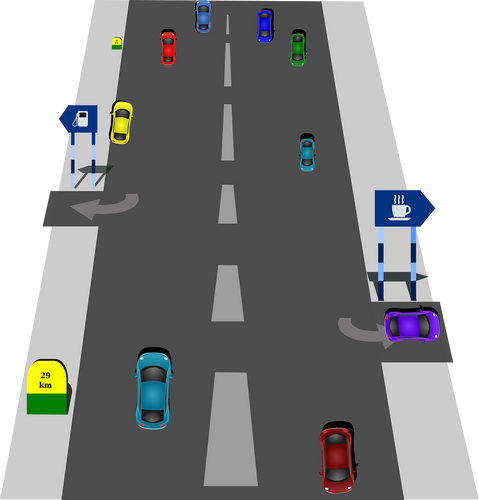Standards Packages
iTeh together with SIST has developed and compiled a comprehensive collection of standard packages to support your standard requirements. Our packages cover an array of content that includes quality management, risk management, road vehicles, machine safety, and much more. With over 200 packages to choose from, you are sure to find a collection to suit your standard needs.
Latest Standards
This document establishes ergonomic design principles for interactive systems related to the software-controlled presentation of information by user interfaces. It applies to the three main modalities (visual, auditory, tactile or haptic) typically used in information and communication technology (ICT). These principles apply to the perception and understanding of presented information. These principles are applicable in the analysis, design and evaluation of interactive systems. This document also provides recommendations corresponding to the principles. The recommendations for each of the principles are not exhaustive and are not necessarily independent from one another.
While this document is applicable to all types of interactive systems, it does not cover the specifics of particular application domains which require context-specific recommendations. This document also applies to outputs from interactive systems (such as printed documents and document exports in common computer formats, e.g. pdf, text and tabular formats).
- Standard26 pagesEnglish languagesale 10% offe-Library read for1 day
This document specifies the physical and mechanical properties of pipes made from unplasticized polyamide (PA-U) in accordance with ISO 16486-1, intended to be buried and used for the supply of gaseous fuels.
It also specifies the test parameters for the test methods to which it refers.
The ISO 16486 series is applicable to PA-U piping systems, the components of which are connected by fusion jointing and/or mechanical jointing.
In particular, this document lays down dimensional characteristics and requirements for the marking of pipes.
Pipes conforming to this document are jointed typically by using mechanical, electrofusion or butt fusion techniques.
- Amendment4 pagesEnglish languagesale 10% offe-Library read for1 day
IEC 60068‑2-88:2025 establishes test methods for the resistance of electronic and electromechanical components, unpopulated circuit boards and assemblies to liquid cleaning media and cleaning processes, which are agreed between user and supplier for applications, where cleaning is required. These tests are not applicable to components, unpopulated circuit boards and assemblies, which are not intended to be subjected to cleaning processes.
Tests XD1 and XD2 primarily are intended for qualification testing of components and unpopulated circuit boards suitable for cleaning processes, but can be adopted as well to testing of material compatibility and specific cleaning media used in manufacturing processes of components and unpopulated circuit boards.
Test XD3 is intended to determine the resistance of electronic assemblies suitable for cleaning processes to the various cleaning processes to which they are exposed during manufacturing, including the effects of assembly and soldering processes.
- Standard34 pagesEnglish languagesale 10% offe-Library read for1 day
IEC 63366:2025 defines product category rules (PCR) for electrical and electronic products and systems (EEPS) to develop Type III environmental declarations for electrical and electronic products and systems (EEPS). It specifies the process and requirements on how to conduct life cycle assessment (LCA) in the context of environmental declarations.
This document provides common rules for:
a) LCA, including the requirements for developing default scenarios;
b) the LCA report;
c) the development of PSR.
This document provides further guidelines for environmental declarations.
The LCA principles and framework are based on ISO 14040 and ISO 14044, and are therefore out of scope of this document.
PCR is complemented by additional product-specific rules (PSR), which further define, for example, functional units and default scenarios in the product-specific context. Therefore, this document also provides guidance on how to develop PSR in corresponding technical committees.
This document has the status of a horizontal publication in accordance with IEC Guide 108. In accordance with IEC Guide 108, this generic essential horizontal standard is intended for use by product committees as a starting point in preparing PSR standards. Specific requirements developed by product committees in PSR standard take precedence over requirements in this standard.
When there is no PSR available in a product committee, this generic essential horizontal standard could be applied by LCA practitioners with recorded complementary specifications.
- Standard60 pagesEnglish languagesale 10% offe-Library read for1 day
- Amendment46 pagesEnglish languagesale 10% offe-Library read for1 day
IEC 63522-29:2025 This part is used for testing the appropriate severities and conditions for measurements and tests designed to assess the ability of DUTs to perform under expected conditions of transportation, storage and all aspects of operational use.
It specifies how to ensure that the capacitances formed by parts of a relay do not exceed specified limits.
- Standard10 pagesEnglish languagesale 10% offe-Library read for1 day
The particular requirements of this part of IEC 60364 apply to:
- fixed equipment within conducting locations with restricted movement; and
- supplies to equipment used within conducting locations with restricted movement.
- Standardization document16 pagesEnglish languagesale 10% offe-Library read for1 day
This part of IEC 61340 provides electrical and mechanical test methods and performance limits for evaluation, acceptance and periodic verification testing of wrist straps.
NOTE All dimensions are nominal except where indicated.
This standard is intended for testing wrist straps and wrist strap systems used for the grounding of personnel engaged in working with ESD sensitive assemblies and devices.
It does not address constant monitoring systems.
- Standard24 pagesEnglish languagesale 10% offe-Library read for1 day
This document specifies requirements for fire activated oxygen shut-off devices that stop the flow of oxygen in respiratory therapy tubing when activated by fire.
NOTE 1 Typical arrangements for fire activated oxygen shut-off devices are shown in Annex C.
NOTE 2 Respiratory therapy tubing is covered by ISO 17256.
NOTE 3 Use of fire activated oxygen shut-off devices in medical devices or accessories is not mandated in this document.
The fire activated oxygen shut-off devices specified in this document are not suitable for use with oxygen therapy systems with flows in excess of 20 l/min).
NOTE 4 There is rationale for this clause in A.2.
The requirements in this device-specific standard take precedence over any conflicting requirements in the general standard for airway devices (ISO 18190). All the common requirements that appear in the general standard for airway devices have been removed from this document.
- Standard22 pagesEnglish languagesale 10% offe-Library read for1 day
IEC 62074-1: 2025 applies to fibre optic wavelength division multiplexing (WDM) devices. These have all of the following general features:
- they are passive, in that they contain no optoelectronic or other transducing elements; however they can use temperature control only to stabilize the device characteristics; they exclude any optical switching functions;
- they have three or more ports for either the entry or exit of optical power, or both, and share optical power among these ports in a predetermined fashion depending on the wavelength;
- the ports are optical fibres, or optical fibre connectors.
This document establishes uniform requirements for the following:
- optical, mechanical and environmental properties.
This third edition cancels and replaces the second edition published in 2014. This edition constitutes a technical revision. This edition includes the following significant technical changes with respect to the previous edition:
a) harmonization of terms and definitions with IEC TS 62627-09;
b) simplified classification, documentation and standardization system in Clause 4, and moving interface style to Annex H.
- Standard55 pagesEnglish languagesale 10% offe-Library read for1 day
- Draft7 pagesEnglish languagesale 10% offe-Library read for1 day
IEC 61643-41:2025 is applicable to devices for surge protection against indirect and direct effects of lightning or other transient overvoltages. These devices are intended to be connected to DC power circuits and equipment rated up to 1 500 V DC. Performance and safety requirements, tests and ratings are specified in this document. These devices contain at least one nonlinear component and are intended to limit surge voltages and divert surge currents. The test requirements provided by this document are based on the assumption that the SPD is connected to a DC power circuit fed by a power source providing a linear voltage-current characteristic. When the SPD is to be connected to a different kind of source, careful consideration is required. This mainly applies with regard to system and fault conditions to be expected in such a system (e.g. expected short circuit current, TOV-stresses). This document can apply for railway applications, when related product standards do not exist for that area or for certain applications. Based on a risk assessment it might not be necessary to apply all requirements of this document to SPDs designed for specific power applications only, e.g. circuits with a low power capability, circuits supplied by nonlinear sources, circuits with protective separation from the utility supply. NOTE 1 More information on risk assessment is provided in IEC Guide 116. SPDs for PV applications are not covered by this document. NOTE 2 Such SPDs for PV applications are covered by IEC 61643-31. NOTE 3 Other exclusions based on national regulations are possible. This International Standard is to be used in conjunction with IEC 61643-01.
- Draft33 pagesEnglish languagesale 10% offe-Library read for1 day
IEC 61326-2-6:2025 applies to the BASIC SAFETY and ESSENTIAL PERFORMANCE of IN VITRO DIAGNOSTIC MEDICAL ELECTRICAL EQUIPMENT (IVD MEE). This part of IEC 61326 applies to the BASIC SAFETY and ESSENTIAL PERFORMANCE of IVD MEE in the presence of electromagnetic disturbances and to electromagnetic disturbances emitted by IVD MEE. BASIC SAFETY with regard to electromagnetic disturbances is applicable to all IVD MEE. NOTE 1 Performance with respect to electromagnetic disturbances other than ESSENTIAL PERFORMANCE is the subject of IEC 61326-1:2020 NOTE 2 IT equipment can be a part of an IVD MEE, if it is required to maintain BASIC SAFETY or ESSENTIAL PERFORMANCE. This edition includes the following significant technical changes with respect to the previous edition: - Update of the document with respect to test levels and documentation.
- Draft34 pagesEnglish languagesale 10% offe-Library read for1 day
IEC 63002:2025 defines common charging interoperability guidelines for power sources (external power supplies (EPSs) and other Sources) used with computing and consumer electronics devices that implement IEC 62680‑1‑3 (USB Type-C® Cable and Connector Specification). This document defines normative requirements for an EPS to ensure interoperability; in particular, it specifies the data communicated from a power source to a device and certain safety elements of the EPS, cable, and device. While the requirements focus of this document is on the EPS and the behaviour at its USB Type-C connector interface, it is also important to comprehend cable assembly and device capabilities and behaviours in order to assure end-to-end charging interoperability. This document does not apply to all design aspects of an EPS. This document does not specify regulatory compliance requirements for aspects such as product safety, EMC, or energy efficiency. This document provides recommendations for the behaviour of a device when used with a power source compliant with this document. It specifies the minimum hardware specification for an EPS implementing IEC 62680‑1‑3. This document also specifies the data objects used by a charging system utilizing IEC 62680‑1‑2 to understand the identity, design and performance characteristics, and operating status of an external power supply. IEC 62680‑1‑2 focuses on power delivery applications ranging to 240 W for a variety of computing and consumer electronics devices including notebook computers, tablets, smartphones, small form-factor desktops, monitor displays and other multimedia devices. This document relies on established mechanical and electrical specifications, and communication protocols specified by IEC 62680‑1‑2 and IEC 62680‑1‑3. These specifications support methods for establishing the best performing interoperability between untested combinations of EPS and devices with the aim of improving consumer satisfaction. Information describing the USB charging interoperability model, overview of USB Type-C and USB Power Delivery specifications, and factors for charging performance are also provided to support implementation of this document. This third edition cancels and replaces the second edition published in 2021. This edition constitutes a technical revision. This edition includes the following significant technical changes with respect to the previous edition: a) power range is increased to 240 W; b) AVS mode is introduced; c) Annex A updates issues of arbitrary combinations of AC adapter and device; d) Annex B describes new safeguards for EPR mode; e) Annex C and Annex D are updated.
- Draft37 pagesEnglish languagesale 10% offe-Library read for1 day
This document specifies methods and metrics for assessing the accuracy and precision of 3D scanned data for use in 3D printing, throughout the full 3D printing lifecycle. This document focuses mainly on 3D scanned data from computed tomography. Computed tomography can acquire information concerning the internal structures, regional density, orientation and/or alignment of scanning objects, as well as their shape and appearance. This document is applicable to the assessment of image-based modelling, segmentation, and 3D models. This document is not intended to assess the 3D printed product itself.
- Standard24 pagesEnglish languagesale 15% off
- Draft24 pagesEnglish languagesale 15% off
- Draft24 pagesEnglish languagesale 15% off
IEC 62508: 2025 provides guidance on current knowledge and practice concerning dependability in an operational environment, in terms of the humans, teams and organizations involved in conducting the work. It is part of a suite of IEC standards that are intended to address the dependability of both the technical and human elements of equipment and organizations. This document describes the human elements of a typical operational system, and the importance of those elements to overall dependability. It also describes the means of assessing how well these elements are functioning, and general concepts on how the reliability of humans can be improved. These elements typically include the individual workers, the groups or teams into which they are organized, the interfaces between humans and technical systems, and the overall organization. The following guidance is applicable to any industry that depends on human-systems interactions involving the technology, software, or systems of work required to support the production and safety objectives of an organization. This document primarily addresses complex technical systems, but some parts are also applicable to the manufacturing of industrial and consumer products. Principles for design of the human-machine interface (usability) are described, and further information can be found in the technical literature and in relevant product standards. Although this document does not specifically cover worker health or safety, the application of this document can raise related issues, particularly in process safety, which is closely associated with system reliability. This second edition cancels and replaces the first edition published in 2010. This edition constitutes a technical revision. This edition includes the following significant technical changes with respect to the previous edition: a) The emphasis on user-centred design in the previous edition was reduced in favour of a greater emphasis on human dependability in an existing operational environment. b) The emphasis on human error and error-rate determination methods was reduced in favour of a greater emphasis on means of providing organizational support for the workforce in their execution of required tasks. c) Where appropriate, discussions of human factors in an operational environment were aligned with current theory, terminology and practice.
- Draft51 pagesEnglish languagesale 10% offe-Library read for1 day
This document sets out principles and procedures for testing the bias of test samples of coals or cokes, taken according to the ISO 13909 series.
- Standard26 pagesEnglish languagesale 15% off
- Draft26 pagesEnglish languagesale 15% off
- Draft26 pagesEnglish languagesale 15% off
This document gives requirements and guidance on security controls and implementation for third-party payment service providers (TPPSPs). This document deals with the overall security controls of TPPSPs from developing and testing to installing, operating and auditing the system. These security controls consist of: — security governance controls; — cross-functional controls; — function-specific controls.
- Standard24 pagesEnglish languagesale 15% off
- Draft24 pagesEnglish languagesale 15% off
- Draft24 pagesEnglish languagesale 15% off
This document specifies the requirements related to dimensional, mechanical, optical and thermal characteristics of thermoplastic films for mulching applications in agriculture and horticulture.
These mulch films are intended to be removed after use and not incorporated in the soil.
These mulch films are not intended to be used for soil disinfection by fumigation. Films for soil disinfection are in the scope of EN 17098-1 [1] and EN 17098-2 [2].
The biodegradable mulch films intended to be incorporated in the soil after used are also not in the scope of this document. They are in the scope of EN 17033 [3].
This document specifies a classification for durability of mulching films and the test methods referred to in this document.
This document is applicable to thermoplastic mulch films, used for agriculture and horticulture in Europe, based on polyethylene and/or ethylene copolymers, of the following types:
- transparent films;
- black films;
- reflective films (e.g. white films, black/white films and black/silver films);
- films of other colour(s) for weed control (e.g. green, brown).
This document defines the criteria for design for recycling of mulch films and refer to EN 18109 for the product lifecycle, including installation, use, removal and collection for end of life for management of the product after its usage.
NOTE Mulch films can be highly soiled by organic and mineral residues at the end of their use life: the observed rates (or levels) of soilage of mulch films can vary from 70 % to 90 %, therefore the film thickness is a key factor on the rate of soilage, the thinnest films (e.g. less than 20 micron) will be the mostly soiled, difficult, expensive to remove, recover and recycle.
- Draft35 pagesEnglish languagesale 10% offe-Library read for1 day
This document provides procedures for monitoring the dose to the skin, the extremities, and the lens of the eye. It gives guidance on how to decide if such dosemeters are needed and to ensure that individual monitoring is appropriate to the nature of the exposure, taking practical considerations into account. This document specifies procedures for individual monitoring of radiation exposure of the skin of the body, extremities (skin of the hands, fingers, wrists, forearms including elbow, lower leg including patella, feet and ankles), and lens of the eye in planned exposure situations. It covers practices which involve a risk of exposure to photons in the range of 8 keV to 10 MeV, electrons and positrons in the range of 0,07 MeV to 1,2 MeV mean beta energies being equivalent to 0,22 MeV and 3,6 MeV beta maximum energy - in accordance to the ISO 6980 series, and neutrons in the range of thermal to 20 MeV. This document gives guidance for the design of a monitoring programme to ensure compliance with legal individual dose limits. It refers to the appropriate operational dose quantities, and it gives guidance on the type and frequency of individual monitoring and the type and positioning of the dosemeter. Finally, different approaches to assess and analyse skin, extremity, and lens of the eye doses are given. It is not in the scope of this document to consider exposure due to alpha radiation fields. NOTE 1 The requirements for the monitoring of the occupational exposure may be given in national regulations. NOTE 2 Dose to the lens of the eye due to intake of tritium is not in the scope of this document. Moreover, the situation of the workers that work in contaminated atmosphere and can have alpha and/or radon eye lens dose is also not in the scope.
- Standard35 pagesEnglish languagesale 15% off
- Standard38 pagesFrench languagesale 15% off
- Draft35 pagesEnglish languagesale 15% off
- Draft35 pagesEnglish languagesale 15% off
- Draft40 pagesFrench languagesale 15% off
Benefits

Full Standards Solution
Our catalog includes not only latest standards but also full meta information about related standardization project lifecycle.

Cost Effective
Our PRICE MATCH GUARANTEE policy with multi-level volume discounts gives our clients the best option in the market. In addition, you can get access to the standards for 3, 10, or 30 days.

Stay Notified
Get alerted to the latest revisions and new standards in the Weekly Newsletter. Standards are constantly changing. Don’t miss a revision that can impact your business.
About Us
iTeh Inc is a software development and IT consulting team of professionals who provide consulting, development and implementation of solutions for all types of businesses.
In cooperation, with the Slovenian Institute of Standardization (SIST), we create a unique solution that covers all aspects of the lifecycle of Standardization organizations. iTeh Standards is a part of the solution that helps SIST to provide and sell their products to Customers.
iTeh Standards Store is an evolving project, our goal is to build long-term relationships with our customers. We believe in delivering quality services to solve our customers' challenges and define success by exceeding our customers' expectations. We are always ready to listen and our experience allows us to provide our customers with helpful effective suggestions. You can contact us by email.
We are committed to providing the best possible experience for our customers.
Compliance with international standards is increasingly becoming one of the key competitive advantages in the global market. Our company creates all conditions for the most comfortable implementation of new documents and norms in the processes carried out by your organization. Some of the key advantages of working with us are:
- Cost-effective - multi-level discounts and permanent updates of the functions give our clients the best option on the market.
- e-Library - access to standards for a period of time of your choice. It is a cost-effective solution for keeping updated with the newest standards.
- Company-wide documents - create a company account and connect all employees with access to purchased standards, e-Library documents, and packages.
- All in one spot - all purchased standards are kept in one place with controlled access by the account administrator.
- Client-centric - providing quality consulting is the prerogative and incentive to create new products that accompany your success and scale.
- 24 / 7 client support
We are dedicated to building mutually beneficial and long-term relationships with our clients. That is why our team focuses on creating services to help our customers develop and achieve new productive results.
























